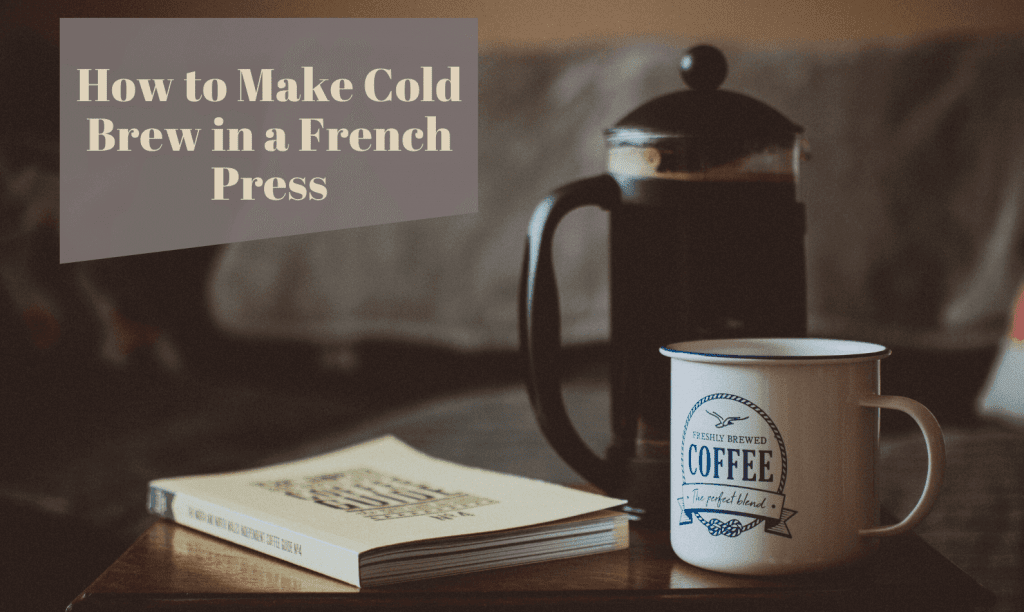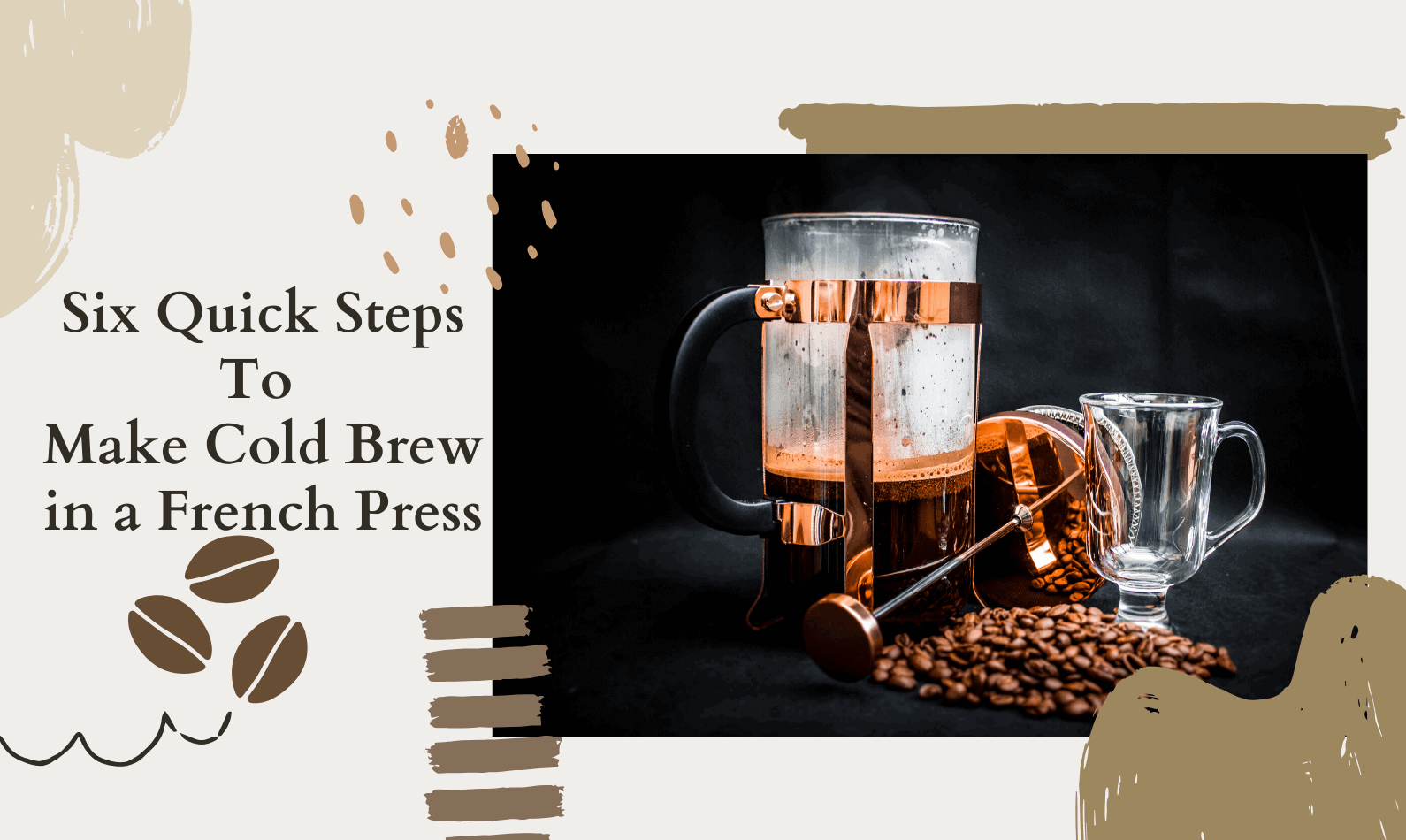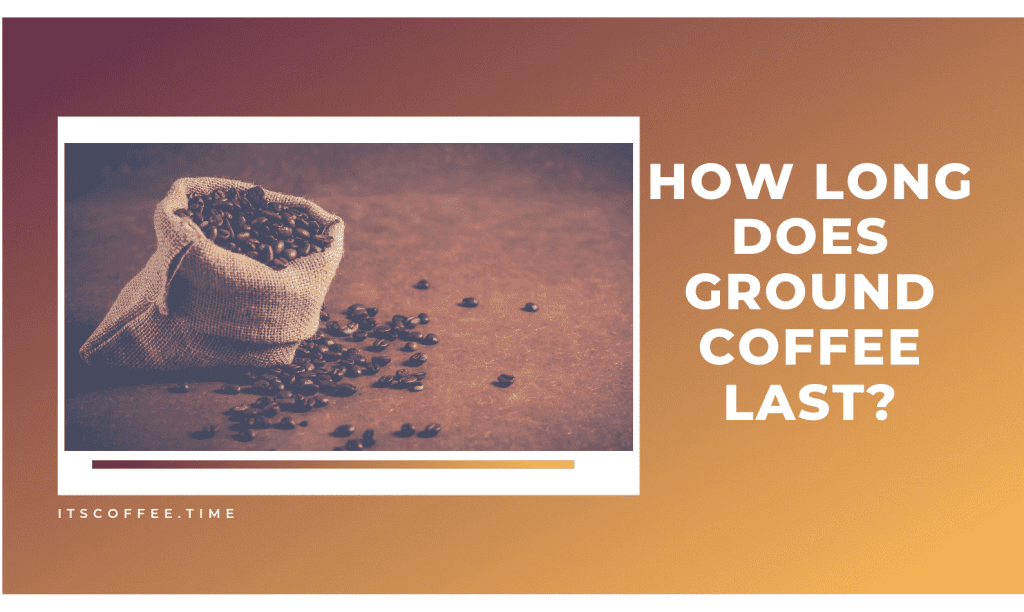How to Prepare Cold Brew in a French Press: Easy Quick Steps: As much as I look forward to summer, I know it’s a trap. When summer is at its hottest and the sun is at its brightest, not only does it drench you in sweat, but it also drains your energy. I cannot think of a crueler irony than to face the inviting green openness of a clear summer day, only to have your motivation and spirit drowned in a lake of warm and salty sweat.
But hallelujah to the Japanese for inventing cold brew coffee to cool and stimulate our overheated bodies, and get us back out frolicking into summertime. You don’t have to brave the herd at Starbucks or order some crazy contraption off of Amazon to enjoy the rejuvenating elixir, because today I am going to show you how to form cold brew coffee with a French press.
What is a Cold Brew?
There are many ways to form iced coffee at home, but the most well-loved is the cold brew method. Cold-brew is as simple as mixing ground coffee with cool water and steeping the mixture in the fridge overnight. The next day you strain the mixture, leaving you with a concentrate (it’s strong, so you’ll want to dilute it) that can be served right away or stored for up to two weeks.
Beyond the very fact that this methodology makes for a longer-lasting brew that may be ready in massive batches, cold brew coffee also tastes downright incredible. The cold steeping method makes a sleek, mellow cup of coffee that has very little acidity or bitterness.
Brewing Cold Brew
The most vital factors for the production of cold brew are the grind used, the proper ratio between coffee and water, and the steeping time. Here are some tips to assist create production cold brew reception easier and make sure you get the flavor you’re trying to find.
- Make sure you use a coarse-grind coffee. This works best for developing flavors during the steeping.
- For the steeping step, you can leave the French press out at room temperature or in the refrigerator. Just ensure you utilize cold water; it’s referred to as cold brew, after all.
- Since the drenching time is so long, start your cold brew the evening before you want to drink it. This way it’ll steep all night, and also the cold brew is going to be prepared after you awaken.
- If you want to make less than that, just keep your water and coffee grounds in a 3:1 ratio.
What You Will Need to Make Cold Brew in a French Press?
Here is a quick list of all the things you will need to create your French press cold-brewed coffee:
- Most obvious, you will need a French press.
- You will also need some coffee beans.
- To grind up those beans, you’ll need a burr grinder. Just make sure whatever you have can produce an extra-coarse grind.
- Although it is not entirely necessary, a good scale will help you maintain accuracy (the key to tasty coffee) in your brew.
- You will need 3 ¾ cups (887 ml) of filtered, room temperature water. And if you use good water like this, your cold brew will taste better.
- You will also need a sealable container, no smaller than your French press, to pour your brew into.
- You may want to have some type of fine filter, though this isn’t an absolute necessity.
Six Quick Steps How to Make Cold Brew in a French Press
1. Measure and Grind Coffee
You’ll need coarse ground coffee for this. You need coarse ground coffee for French press anyway, but some folks recommend you use a grind a little larger than coarse.
This is mostly because the grind size for a regular French press is meant to steep fairly quickly (about 4 minutes). However, cold brew takes a much longer time, 12 to 18 hours and as such, it needs a grind size that’s a little larger. If you use a grind size too small, it may release more bitter/acidic elements than you’d like. That being said, you go ahead and use a grind size as coarse as you like. Start with using the same grind size as for regular French press. After all, the kind of bean you use matters just as much, and some might react better to some grind sizes.
2. Pour the Water
As for the coffee to water ratio, you need to check the total volume of your French press. For example, if it can hold 30 oz of water, know that you’ll have to calculate that as your final product that includes ground coffee. Meaning you’ll get something like 4 oz of ground coffee to 26 oz of liquid. This is using a 7:1 water to coffee ratio formula.
If you want your coffee stronger, use 4 or 5 times as much water as coffee. So for example, if you have a total volume of 30 oz in your French press, using a 5:1 ratio you’d need 6 oz of ground coffee and 24 of water. Make sure to measure just how much liquid your French press can take. If you overdo it and the coffee comes out too strong, you can always dilute it in your cup with a little extra water, or milk.
3. Stir the Water
Remove the plunger and the filters, then add the ground coffee into the empty press. Add in the water, and gently stir the whole mixture. Instead, use the back of a metal spoon (to prevent any sticking) to press down on any grounds floating near the top, ensuring that all the grounds have been submerged.
4. Let steep for 12-18 hours
Cold-brew coffee takes a long time to steep. If you want a quick cup, you’re most probably not going to get one because that’s pretty much the nature of cold brewing anything. It takes time, and you’ll need to think ahead when doing this. How long you let the coffee steep depends on how strong you want the coffee to be, and where you’ll let it sit while it steeps. If you let it steep on the counter, it will still be cold brew but will not need as much as 18 hours.
However if you let it steep in the fridge, then you’ll need to give it those 18 hours, possibly a little more to get the full flavor. Also, whether you let it steep at room temp or in the fridge, know that a short steep time equals weaker coffee, and a longer steep time a stronger coffee. But only to a point. If you let it steep too long – like for example 20 hours on the counter – it won’t be much stronger than 16 hours on the counter. And there isn’t much need to reach 24 hours, even if you’re steeping in the fridge.
However, if your schedule is made in such a way that you’ll be away for 24 hours and have no other option, your coffee will be fine. It just won’t be that much stronger, is all I’m saying. When setting the coffee aside to steep, make sure you don’t add in the plunger. Leave it aside, and instead wrap some cling film on the top of the press to make a sort of lid.
5. Gently press the plunger
Once you’ve decided the coffee is done steeping, you’ll need to remove the lid you’ve created, and instead, add the top of the press with the plunger. When ready, gently push the plunger into the coffee. Make sure to go slow, to not disturb the ground coffee too much. Also, make sure to not go all the way down, touching the grounds, otherwise, you won’t be able to filter it as well. This process might take half a minute, but it’s going to be worth it in the end.
6. Pour or strain into a large pitcher and Enjoy
Now, you have the option of pouring the coffee into the serving pitcher directly or filtering it.
If you filter it, it’s going to be a clearer, cleaner cup of coffee. You don’t, it’s going to have a little sediment at the bottom and it might be a little cloudy. If you want to filter it, you can use a simple mesh strainer and place a paper filter into the strainer, and pour the coffee through that into the pitcher or jar or whatever you’re going to use. After you’re done decanting the coffee, you can keep it in the fridge for up to one week, with a tight lid on.
Read more about Best Camping French Presses: The Ultimate Buyer’s Guide 2022
This is unsweetened, and with no cream or milk added. Whichever way you go, one filter or two, once you’ve decanted your brew you are now ready to enjoy. When preparing your cup, remember that cold brew is incredibly concentrated and that you should dilute it with a few ice cubes and a splash (or two) of water.
Conclusion- How to Make Cold Brew in a French Press
You can make your cold brew coffee, right at home! Just use your French press as you would for any cup of regular French press coffee. Only you’re adding cold, fresh water and you’re not heating anything. The result is very much the same with regular cold brew, maybe a little cloudier.





